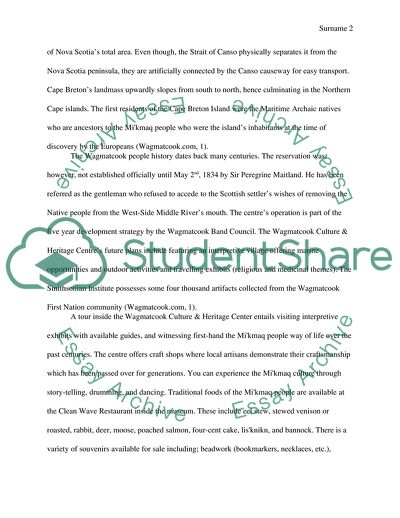Cite this document
(Wagmatcook Culture and Heritage Centre Report Example | Topics and Well Written Essays - 1500 words - 1, n.d.)
Wagmatcook Culture and Heritage Centre Report Example | Topics and Well Written Essays - 1500 words - 1. https://studentshare.org/tourism/1788065-wagmatcook-culture-hartige-centre-cape-bretoncanada-866-295-2999
Wagmatcook Culture and Heritage Centre Report Example | Topics and Well Written Essays - 1500 words - 1. https://studentshare.org/tourism/1788065-wagmatcook-culture-hartige-centre-cape-bretoncanada-866-295-2999
(Wagmatcook Culture and Heritage Centre Report Example | Topics and Well Written Essays - 1500 Words - 1)
Wagmatcook Culture and Heritage Centre Report Example | Topics and Well Written Essays - 1500 Words - 1. https://studentshare.org/tourism/1788065-wagmatcook-culture-hartige-centre-cape-bretoncanada-866-295-2999.
Wagmatcook Culture and Heritage Centre Report Example | Topics and Well Written Essays - 1500 Words - 1. https://studentshare.org/tourism/1788065-wagmatcook-culture-hartige-centre-cape-bretoncanada-866-295-2999.
“Wagmatcook Culture and Heritage Centre Report Example | Topics and Well Written Essays - 1500 Words - 1”. https://studentshare.org/tourism/1788065-wagmatcook-culture-hartige-centre-cape-bretoncanada-866-295-2999.


